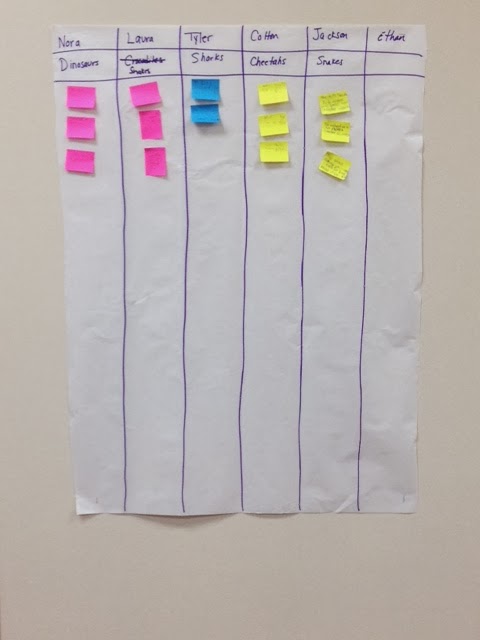Vertical Alignment--more than a catchy phrase--for successful teachers and students, it's got to be a way of life. More than curricular alignment, instructional alignment is a must-have for any school district that wants students to transition from one grade-level to another without a lot of wasted time and effort. Here are five reasons why vertical alignment must be at the forefront of our educational discussions and practice.
1)
Vertical alignment helps teachers work smarter--not harder. Ask a child what they learned today. Nine times out of ten, they're going to answer the same way every time, "I don't know." And its' not because they really don't know, it's because they aren't exactly sure what answer you are looking for or how to articulate one of the many things they learned that day. Therefore, we cannot rely on our students to be able to accurately tell us what they learned from one year to the next. In order for our teachers to move seamlessly from the skill and knowledge demands of one year to the more rigorous demands of the next, we have to be vertically aligned.
2)
Vertical alignment builds comprehension and understanding. If I spend an entire year in second grade explaining to my students how to use clues from the literature to make a "best guess" and then the third grade teacher attempts to explain making an inference as "using context to understand the story," she is going to have a really hard time getting all of the information my students already know about how to make an inference to transfer, not because they don't know
how but because they haven't connected the language she is using to the language I used last year. We would both be doing our students a solid by getting together and discussing the best way to introduce this concept so that next year's teacher can build upon the skills the kiddos already have, not reinvent the wheel each year.
3)
Vertical alignment increases academic vocabulary. Okay, back to the scenario in reason #2. How awesome would it be to hear an entire class of kindergartners explain how they "infer" that the Big Bad Wolf will attempt to blow down the third little pigs house in the same manner that he attempted to blow down the first two little pigs' houses? Well, let's teach our students the academic vocabulary from the very beginning and we will be hearing these statements. There's no reason to dumb it down for them! We want to use the correct vocabulary, give them the meaning (over and over and over again) and ask them to use the vocabulary correctly so that by the time they really must know these words, they have an extremely firm grasp of exactly what these words really mean.
4)
Vertical alignment makes us stronger across the curriculum. Vertical alignment actually aids in horizontal alignment as well, particularly when we are talking about upper grade-levels. When lower grade-level teachers who are self-contained are aligning with upper grade-level teachers who are departmentalized, we all become more tightly focused on the same ideas and concepts. There are so many concepts that work across several content areas--systems, change over time, predictions, inertia, the list goes on and on. Aligning these concepts vertically works for all of us. It also allows us to have conversations with teachers who teach other contents so that we can make sure that we are talking about how systems work, for example, using similar vocabulary across the disciplines.
5)
Vertical alignment allows our students to take more ownership in their own learning. When students know their teachers are communicating, that each teacher has a vested interest in the students' success, they are more likely to become motivated to succeed. Portfolios are a great way to help track student success from one grade-level to another. They certainly aid in vertical alignment. They also give students an opportunity to show-case what they have learned. Knowing that what occurs in the classroom from one year to the next is a culminating experience helps students to see the importance of being a life-long learner.
These are just a few of the many reasons why vertical alignment is critical to student and teacher success. There are a lot of ways to improve vertical alignment. I am very proud of the way our district has used the Reading Cadre as a vertical alignment piece. We have also talked about using Google Hangout and specific hashtags on twitter for vertical alignment, as well as professional development sessions, such as the roundtable discussions we had today. What other ways can you think of to aid in vertical alignment?

